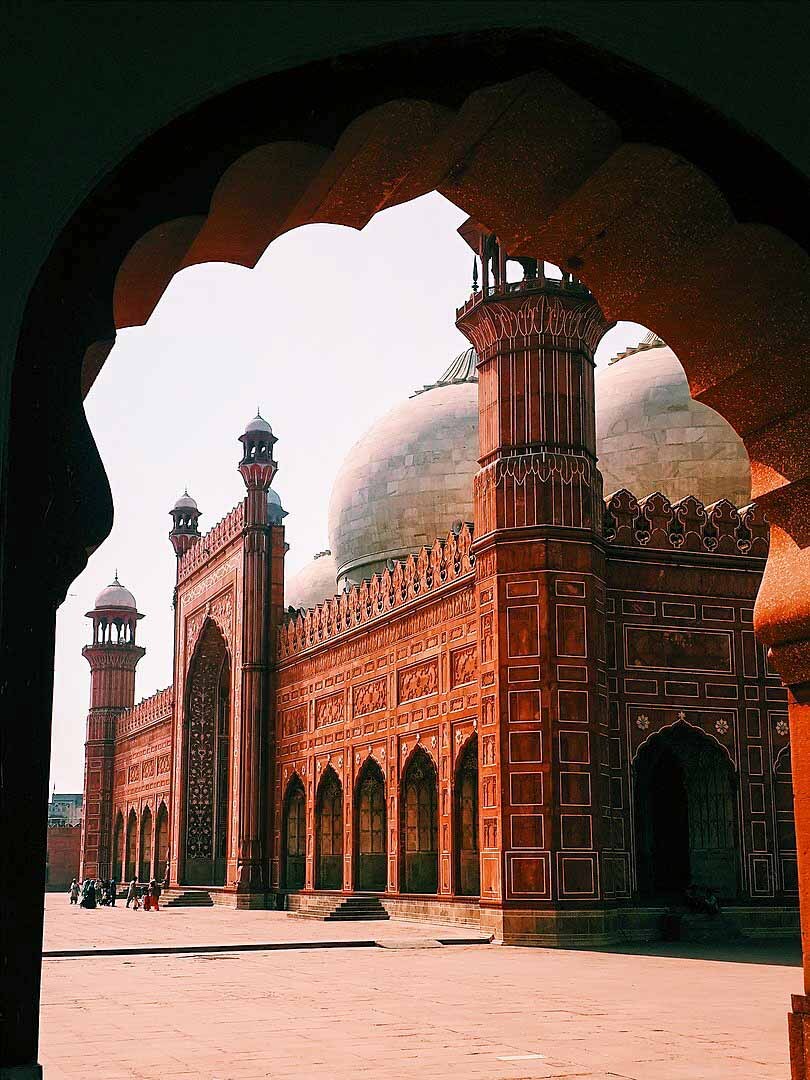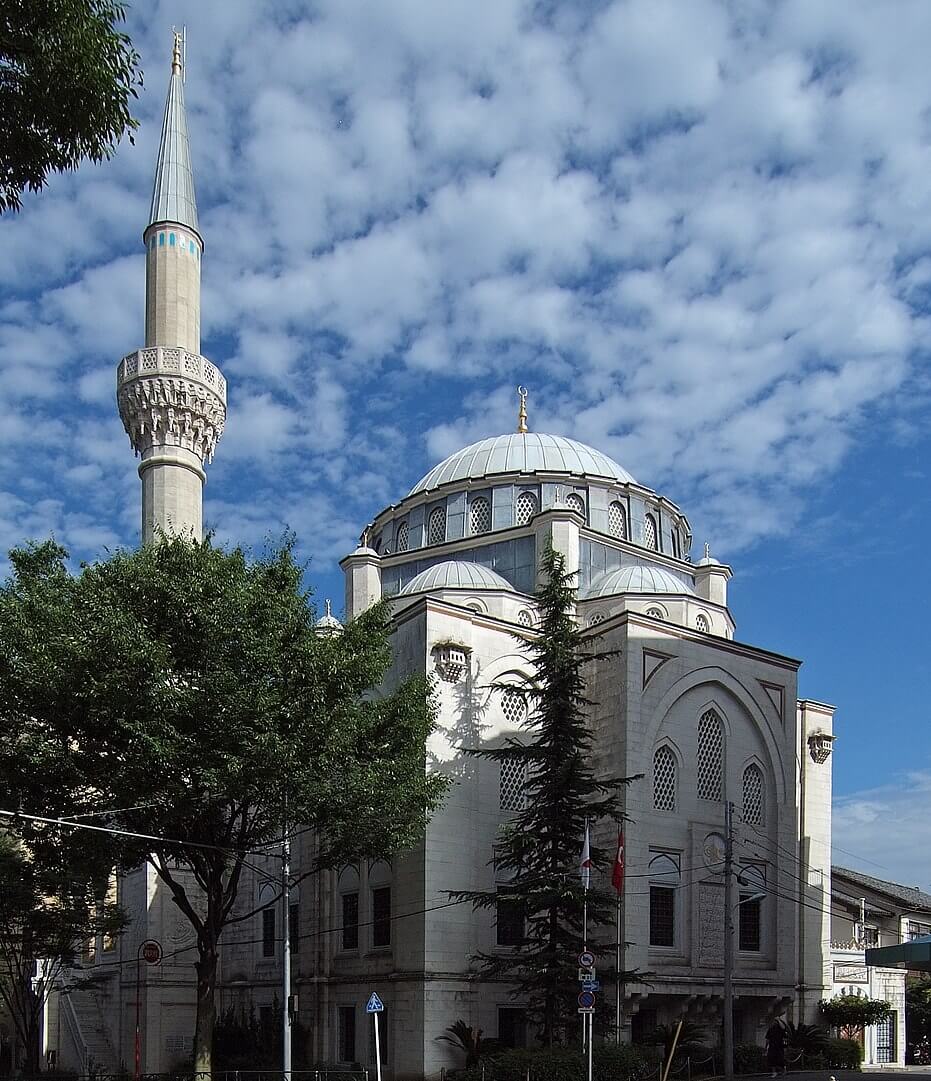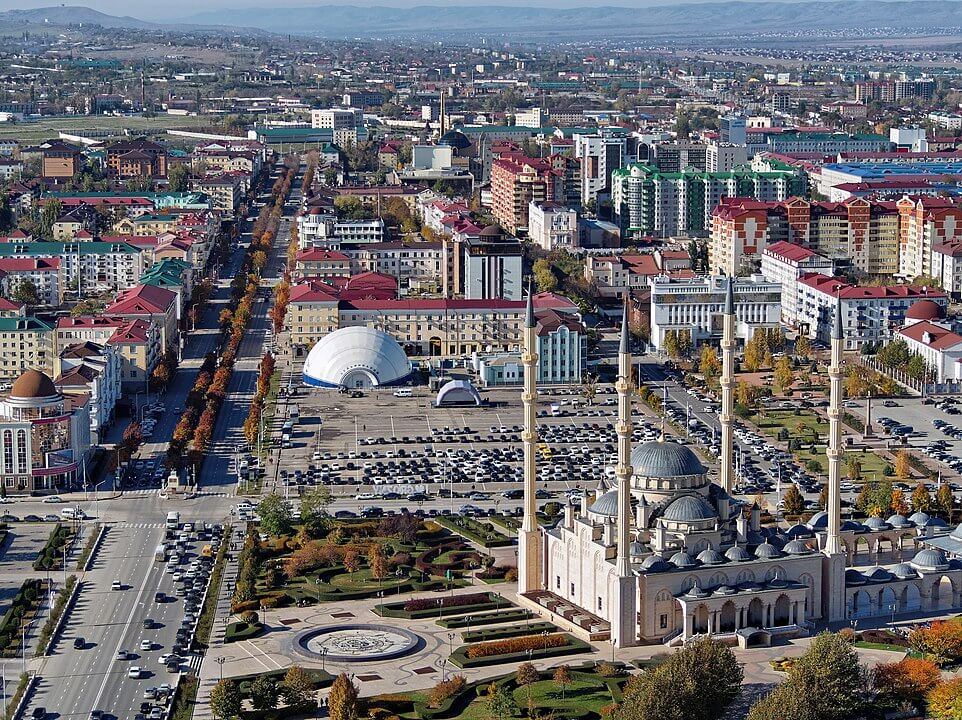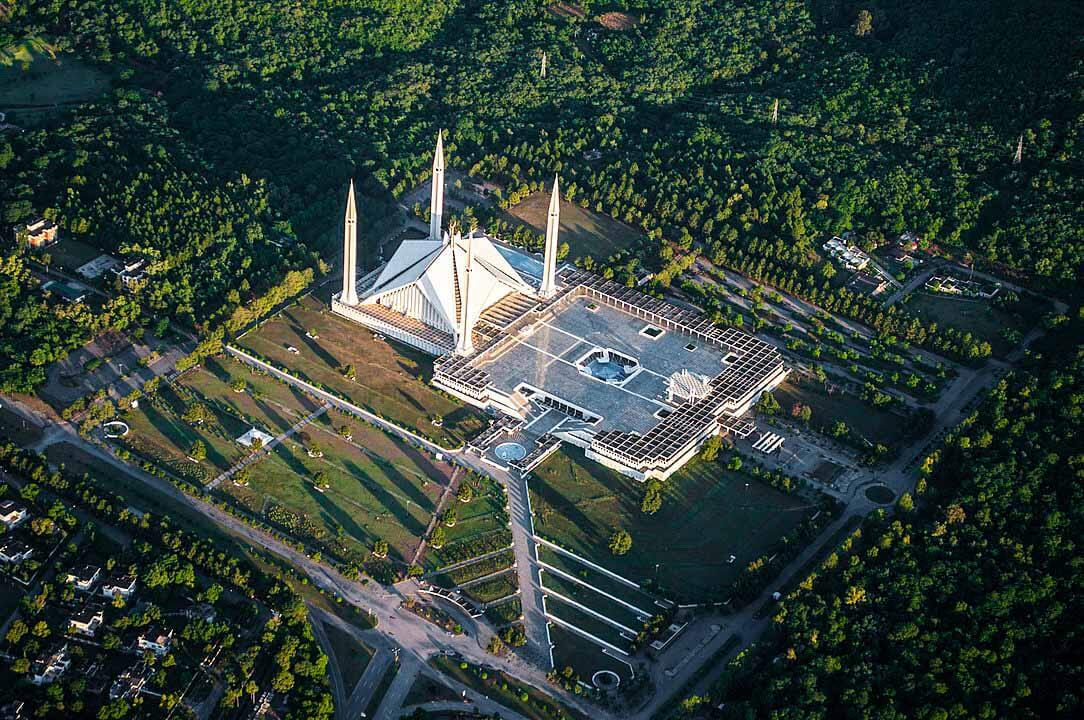Lahore, Pakistan
Coordinates: 31.588070, 74.310120
The Badshahi Mosque is a Mughal era mosque in Lahore, capital of the Pakistani province of Punjab, Pakistan.
The mosque is located west of Lahore Fort along the outskirts of the Walled City of Lahore, and is widely considered to be one of Lahore’s most iconic landmarks.
The Badshahi Mosque was built by Emperor Aurangzeb in 1671, with construction of the mosque lasting for two years until 1673.
It remains the largest mosque of the Mughal-era, and is the second-largest mosque in Pakistan.
After the fall of the Mughal Empire, the mosque was used as a garrison by the Sikh Empire and the British Empire, and is now one of Pakistan’s most iconic sights.
Tomb of Muhammad Allama Iqbal
Near the entrance of the mosque lies the Tomb of Muhammad Iqbal, a poet widely revered in Pakistan as the founder of the Pakistan Movement which led to the creation of Pakistan as a homeland for the Muslims of British India.
Also located near the mosque’s entrance is the tomb of Sir Sikandar Hayat Khan, who is credited for playing a major role in preservation and restoration of the mosque.
Background
The sixth Mughal emperor, Aurangzeb, chose Lahore as the site for his new imperial mosque. Aurangzeb, unlike the previous emperors, was not a major patron of art and architecture and instead focused, during much of his reign, on various military conquests which added over 3 million square kilometres to the Mughal realm.
The mosque was built to commemorate Aurangzeb’s military campaigns in southern India, in particular against the Maratha king Shivaji.
As a symbol of the mosque’s importance, it was built directly across from the Lahore Fort and its Alamgiri Gate, which was concurrently built by Aurangzeb during construction of the mosque.
Desecration of the mosque during Sikh Rule
On 7 July 1799, the Sikh army of Ranjit Singh took control of Lahore. After the capture of the city, Maharaja Ranjit Singh used its vast courtyard as a stable for his army horses, and its 80 Hujras (small study rooms surrounding the courtyard) as quarters for his soldiers and as magazines for military stores.
In 1818, he built a marble edifice in the Hazuri Bagh facing the mosque, known as the Hazuri Bagh Baradari, which he used as his official royal court of audience. Marble slabs for the baradari may have been plundered by the Sikhs from other monuments in Lahore.
In 1848, the Samadhi of Ranjit Singh was built for the Sikh ruler Ranjit Singh at a site immediately adjacent to the mosque after his death.
British Rule
In 1849 the British seized control of Lahore from the Sikh Empire. During the British Raj, the mosque and the adjoining fort continued to be used as a military garrison.
The 80 cells built into the walls surrounding its vast courtyard were demolished by the British after the Indian Rebellion of 1857, so as to prevent them from being used for anti-British activities. The cells were replaced by open arcades known as dalans.
Because of increasing Muslim resentment against the use of the mosque as a military garrison, the British set up the Badshahi Mosque Authority in 1852 to oversee the restoration and to re-establish it as a place of religious worship.
From then onwards, piecemeal repairs were carried out under the supervision of the Badshahi Mosque Authority. The building was officially handed back to the Muslim community by John Lawrence, who was the Viceroy of India.
The building was then re-established as a mosque.


















